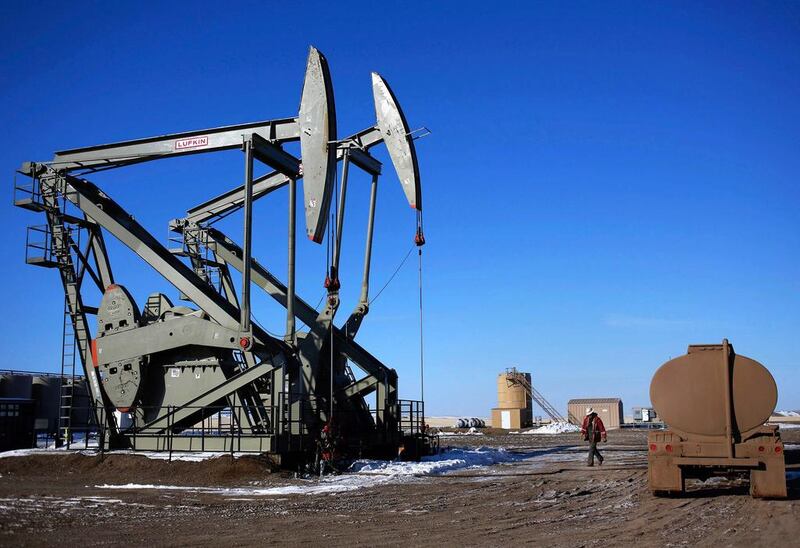Last week, for the first time since last autumn’s oil price collapse, the number of US horizontal rigs – those used for drilling shale oil – rose across the board.
They increased in all the major shale plays – the Bakken, Permian and the Eagle Ford – and on balance in the other plays as well. And they did so in a relatively weak oil price environment, with prices for West Texas Intermediate (WTI) averaging only $57 per barrel for the week.
So what happens now? The rig recovery may prove a blip, and modest rig declines may resume. This is possible but unlikely. The rig count has been moving sideways for six weeks now, and the most likely worst-case outcome is a steadying near recent levels.
Rig counts could also recover to a somewhat higher level and hold there. In Canada, for example, horizontal oil rig counts, which had fallen to minimal levels, are four times higher than six weeks ago. The number has now held steady over the past few weeks.
Overall, therefore, US rig counts are unlikely to fall from here, and instead are likely to recover, although we don’t know whether the numbers will recover a lot, or only a little.
As a result of the collapse of rig counts, analysts widely expect that US oil production peaked in March or April and will begin to fall. We can say with confidence that Bakken output is falling, because the state government in North Dakota maintains timely and complete records. In Texas, the matter is more problematic, because statistics are published with a two-month delay and face heavy revisions for up to six months. The US may be the most advanced oil economy in the world, but our statistics remain dreadful. As a result, we don’t know whether total oil production is actually falling. My advisory firm’s estimates of US production suggest that supply was flat in the past six weeks.
If US production follows the script, it begins to fall – and fall dramatically – over the next three months, ending the year nearly 1 million barrels per day (mbpd) below the peak of late last year.
Even a modest recovery in rig numbers would not halt the decline, as shale wells have extraordinarily high decline rates. A cut in rig numbers does not immediately result in declining production. But the opposite is also true.
An increase in rig counts does not immediately lead to an increase in production. If analyst views prove accurate, we are facing a dramatic near-term collapse in US oil production.
But maybe not. Some analysts believe that the US has a substantial shale oil resource, up to 60 billion barrels, available at $50 per barrel (WTI basis). If that were true, the US could comfortably add 1 mbpd per year at prices of $10 per barrel lower than seen over the last few months. In that case, US oil production will not fall but instead will stabilise at current levels, and in a few months begin to grow again.
US shale oil would then be following the path of US shale gas, which continued growing at low prices and rig counts owing to productivity gains, thereby successfully squeezing out Canadian gas imports and a good bit of US conventional and offshore gas production.
In the case of oil, the majors such as Shell and Exxon would feel the pain. Our analysis suggests the majors are still working under the assumption of $90-per-barrel oil.
They need such a high price to develop many of their exotic deepwater, Arctic, LNG and high-pressure and or high-temperature projects. If US shales could begin to increase production at $60 WTI, the oil majors would be in deep trouble.
And then there is the matter of the missing inventories. If the Paris-based International Energy Agency (IEA) and the US energy information administration were to be believed, the world should be struggling with 450 to 500 million barrels of excess crude and product inventories (above normal commercial levels). However, independent analysts have been unable to actually find these barrels in country stock reports.
We can say with some confidence that inventories located in the advanced member countries of the Organisation for Economic Cooperation and Development (OECD) are about 150 million barrels above normal levels. And that is about it.
Outside the OECD, Iran appears to have 30 million barrels parked in tankers in the Arabian Gulf; another 60 million barrels might be in various onshore storage tanks, for example, at Saldanha Bay in South Africa. Notwithstanding, stocks for crude and major products appear about 40 million barrels below anticipated levels in China, and Singapore stocks appear within normal tolerances.
Thus, some consultancies believe that excess inventories do not exceed 260 million barrels, with about half of the total in the US alone. We at Princeton Advisors estimate the excess at about 315 million barrels.
If this is true, then actual demand must have been higher – much higher – than that recorded by the IEA and US energy information administration. Indeed, 260 million barrels of excess inventory suggests that world oil consumption in the fourth quarter of last year and the first quarter of this year was 2 million barrels per day higher than the same period a year earlier.
And this growth increases to 2.7 mbpd in the second quarter, compared to a second-quarter forecast of 1.1 mbpd growth from the IEA. Demand appears to be running hot.
So where does this leave us? If US shales can resume their growth quickly, then oil prices may stay subdued. However, if shale growth does not recover by September, then conventional non-Opec production declines and surging demand are likely to push oil prices up, and by quite a lot.
Steven Kopits is the president of Princeton Energy Advisors in Princeton, New Jersey.
business@thenational.ae
Follow The National's Business section on Twitter





